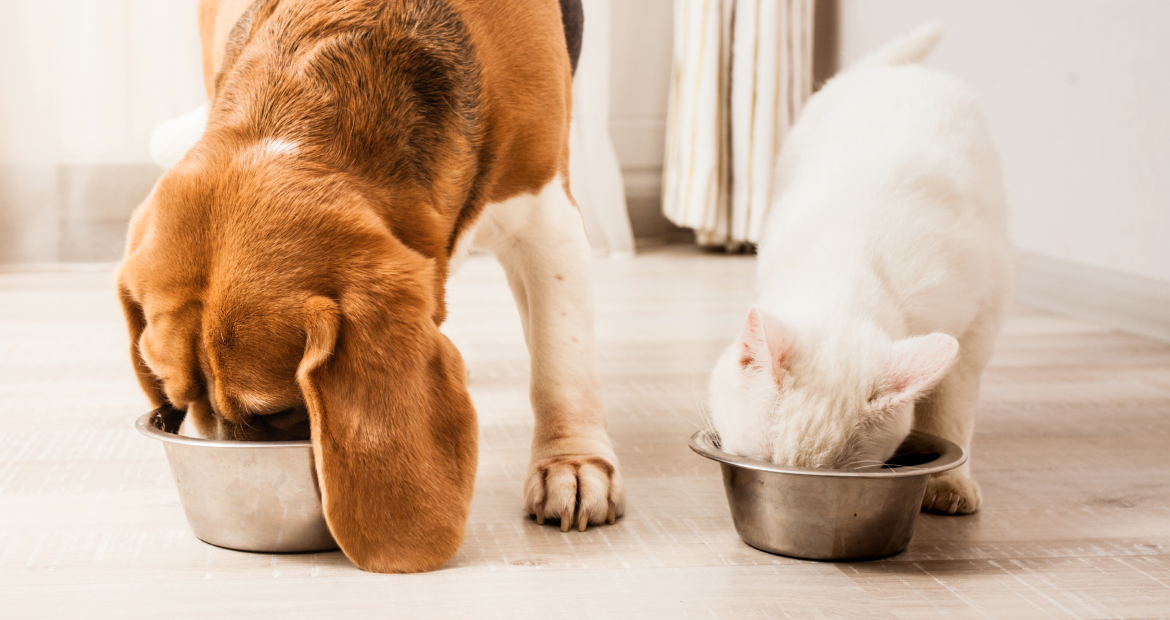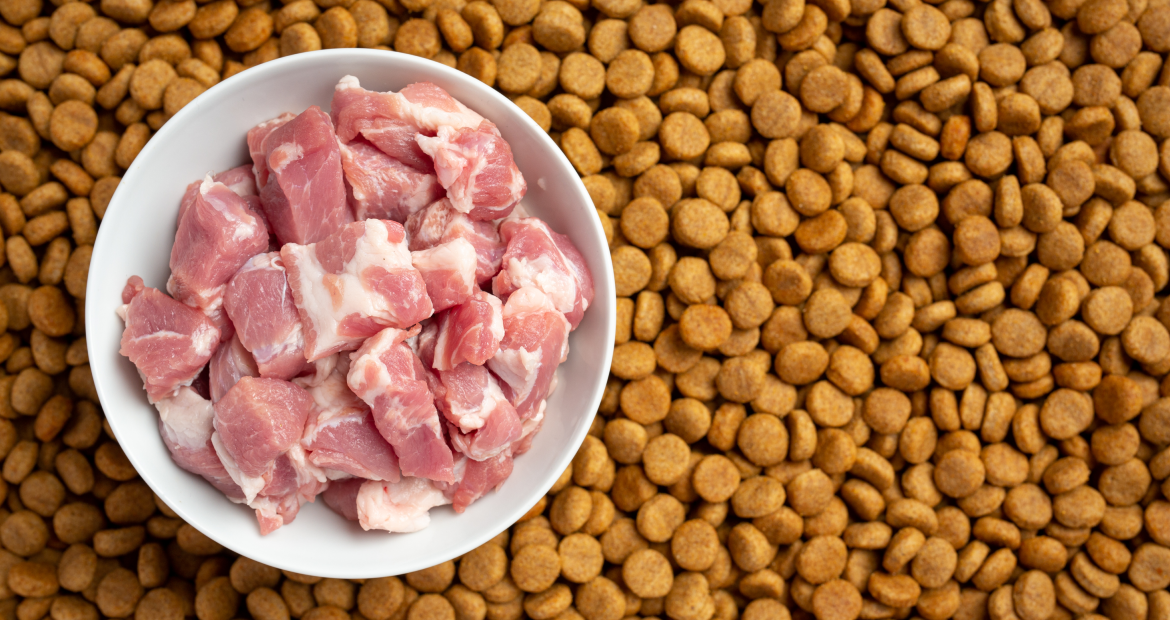BVaap calculator and measuring the protein quality in pet food

BOWL WOW, a Russian producer of super-premium pet food, has incorporated cutting-edge technology into its manufacturing process. Olga Levtsova, the company's principal technologist and biophysicist, developed BVaap calculator (Biological Value of the Amino Acid Profile) to assess protein quality and benefits for pets. BOWL WOW is currently the one and only manufacturer in the Russian Federation to apply such technology.

The biological value of the amino acid profile known as BVaap is a crucial ingredient in pet food.
High protein content in pet food has become a popular trend in recent years, and it is now one of the primary consumer expectations for super-premium pet food. Whatever the buyer demands, the manufacturer delivers. And the manufacturer tries to incorporate as many protein-rich substances as possible into its product without even trying to analyze them because the consumer is most interested in the amount of protein provided.
However, all proteins are not alike. High protein content is seen as an important indicator by BOWL WOW experts. Thorough examination of the enormous variety of pet food available on the market has revealed that the amount of protein does not always correspond to the food's grade or quality. Why's that? Let’s talk about it.
Despite the fact that these meals contain over 80% protein, we instinctively recognize that protein from a feather or pork skin is of inferior quality. However, high-quality, nutrient-rich sources of protein include fish, chicken thighs, and eggs. But how can you transform this information into numerical form so that you can, first and foremost, compare various protein sources? The BVaap (Biological Value of the Amino Acid Profile) indicator has been created with this objective in mind.
In order to fully comprehend the significance of the BVaap calculation for pet food makers, let's examine why pets require protein in the first place and why consumers are so preoccupied with it.

Protein's role in the body
- Proteins are complex, high-molecular-weight organic compounds that are broken down in the body to amino acids and used as the basic building material for all organs and systems in both humans and animals.
- Dogs and cats need 22 types of amino acids for a healthy functioning body. Only 12 of these can be produced by the animal body on its own; the rest must be obtained through diet. These essential amino acids include arginine, histidine, methionine, threonine, isoleucine, leucine, phenylalanine, valine, tryptophan, and lysine in dogs. Taurine, a unique β-Amino Sulfonic Acid that performs critical tasks in the animal's body, should be added to this list in cats.
- All organs operate adequately when the whole amino acid profile, including essential and synthesized amino acids, is available in sufficient proportions. But in cases of a deficiency of at least one amino acid, the whole system fails at the stage of protein synthesis.
- Ribosomes start building protein but stop if they can't get the missing amino acid. The cell degrades incomplete protein, and any amino acids used in the process are excreted from the body. The procedure is carried out repeatedly until the deficient amino acid is supplied. The stress on the kidneys is enhanced because the excretion of amino acids and nitrogen metabolism byproducts, which are generated in this process, occurs through the kidneys. Therefore, giving a pet protein that is difficult for it to digest on a frequent basis will eventually result in serious health issues.
- The use of amino acids is not limited to protein synthesis. One of the most significant neurotransmitters, serotonin, sometimes referred to as the "feel-good chemicals," is synthesized from the amino acid L-tryptophan. Additionally, the amino acid arginine plays a role in the cycle of ammonia-to-urea conversion and aids in lowering the danger of toxins getting into the blood and brain.
That is, the stable functioning of the body depends on the periodic intake of all amino acids.

The ideal amino acid profile and BVaap
The optimal ratio of amino acids is commonly referred to as the ideal amino acid profile, and this ratio is unique for each species. For instance, cats require more arginine than humans or dogs do since their bodies utilize this amino acid permanently due to an open urea cycle. Even within the same species, the need for amino acids may alter at different stages of life.
Based on the latest scientific evidence, the BVaap calculator allows you to determine how closely the amino acid profile of a raw material or food corresponds to an animal's optimal amino acid profile. It takes into account the specific amino acid requirements of cats, dogs, kittens, and puppies. Digital comparisons between a feather meal (BVaap is 19% for cats and 17% for dogs, respectively) and a chicken egg (BVaap is 72% for cats and 91% for dogs, respectively) are now possible. As you can imagine, the higher the BVaap, the better.
The main task of BVaap for manufacturer is choosing the appropriate amino acid profile for each animal species The formulation can be modified using the BVaap calculation so that the animal receives the greatest benefit in addition to satisfying its appetite. A consumer can determine whether the selection of food conforms to the appropriate amino acid profile for the pet by checking the presence of all essential amino acids. Thanks to the BOWL WOW BVaap calculator, it is now possible to produce pet food that fully meets the needs of the animals.


Let's go through an example.
BOWL WOW kitten food with turkey, chicken and blueberries contains 83% protein (or 34 g per 100 g of product). This is the total percentage of animal protein in the pet food, which includes protein from dehydrated turkey, dehydrated chicken, dehydrated fish, hydrolyzed beef protein, and dehydrated eggs. As with any food, protein cannot be absorbed 100% by the animal's body for physiological reasons. So how do you determine the food's nutritional value? That's where the biological value of the amino acid profile becomes helpful. BOWL WOW kitten food has a 71% BVaap, which is a high value. Chicken liver has a BVaap of 56%, turkey heart is 55%, turkey thigh is 78%, and chicken breast is 68%, in comparison. Figures reveal that BOWL WOW meals are made from high-quality protein and, in certain situations, are nutritionally superior to meat ingredients.

Quality food has quality protein!
Based on all of the above, we can conclude that the quality of protein is the most important indicator of pet food quality. Because of this, every conscientious pet owner should consider not just the quantity of protein present but also how easily the cat or dog can digest it and whether the food's amino acid profile matches that of the particular animal.
Think about it: what's the point of high protein if it isn't absorbed? Food containing 65% or more animal protein may be only 20% or less digestible due to poorly selected protein sources. And despite the fact that, in terms of protein percentage, it will belong to the category of super-premium pet food, in terms of value, such a diet can hardly be compared even with the premium segment.
Based on fundamental veterinary care expertise, the BOWL WOW team manufactures pet food that is safe and of high quality. We can only be certain that we are providing the healthiest diet for your pet if each ingredient (and its actual effect on the body) is scientifically validated.
We hope you found the material offered interesting and informative. And, of course, we'll keep sharing instructional content from the field of nutritional research and raising awareness among owners, thereby growing our humble contribution to pet health care.


